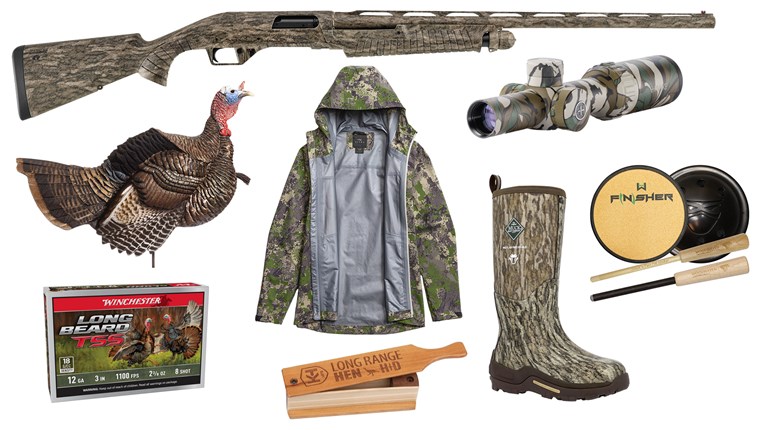
According to Merriam-Webster, a silver bullet is, “something that acts as a magical weapon; especially: one that instantly solves a long-standing problem.” It emerged from werewolf lore as the only reliable and instantly effective way to stop a werewolf. If you can shoot a silver bullet into the heart of a werewolf, you will have effectively and permanently terminated the threat.
Though the werewolf legend is stained with historical reverie, the notion that a human can shape shift into a wolf is, well, crazy. However, as Ian Woodward suggests in his book, “The Werewolf Delusion, Rabies”—a viral disease historically known as hydrophobia, which makes its victim go quite mad—could have been the basis for the legend. Present on every continent save Antarctica, rabies is a dangerous and deadly problem. If confronted with a rabid animal, a shot to the heart is the ideal solution. At my home in West Virginia, two rabid foxes have been dispatched in just that manner.
This may seem to be a strange way to lead into a column that’s supposed to be dedicated to ammunition. However, there’s a strong correlation between a werewolf and a criminal with murderous intent, and the infatuation manufacturers and gun owners have with the magic bullet. The werewolf legend was an early way of explaining misunderstood human violence. The silver bullet is the salvation we cling to, with the hopes of saving ourselves from evil. Neither exists, but bad guys, copper and lead are real.
Early handguns fired round balls made of lead. The next generation of pistols relied on conical-shaped bullets made of the same substance. Up until the arrival of the 20th century, those simple and soft-lead projectiles were put to effective use in thwarting violence. As handgun-bullet velocity increased, copper or gilding metal—an alloy made from 95 percent copper and 5 percent zinc—began to be used as a jacket for those bullets. This jacket allowed the bullets to effectively engage the rifling and provide accuracy at distance.
But, jacketed bullets would not deform when they hit a bad guy or a werewolf. They simply poked a small hole through and through. By forming a hollow cavity in the nose of these jacketed bullets, they could be made to expand when they encountered soft tissue. This deformation increased the bullet’s frontal area, increasing tissue displacement and damage—and reducing penetration. The act of deformation slows the bullet down. As some would say, deformation allows the bullet to transfer energy to the target, or that the bullet uses that energy to change shape. Either way, what we now call “expanding bullets” are the standard when it comes to fighting evil with a handgun.
There is evidence to support the notion that an expanding bullet (from a handgun) is more effective at stopping bad guys. Countless studies have been conducted by a plethora of government agencies and even private establishments. Most use various media to shoot bullets into. Others have compiled results from actual shootings. As a result of these trials, tests and investigations, standards or benchmarks of performance have been established. The most referenced is the highly publicized one created by the Federal Bureau of Investigation (FBI).

In an effort to quantify the potential effectiveness of handgun ammunition, the FBI devised a test, comprised of six events, where bullets are fired into calibrated 10-percent ordnance gelatin through a variety of barriers. The score, which relies heavily on penetration, is calculated through a complex formula. Though intriguing in its totality, essentially the process is used to identify bullets that will deform/expand and reliably and consistently penetrate between 12 and 18 inches. (It’s important to note however, that no werewolves or bad guys are shot as part of this test.)
Established on good intentions, and because of the infamous 1986 Miami shootout, the work of the FBI has driven the design and manufacture of defensive-handgun ammunition ever since. All because a single and lethal hit from a 115-grain Silvertip (oh, the irony) fired from a 9 mm did not incapacitate a bad guy fast enough. The bullet stopped in the lung, just short of the heart.
I once investigated a murder where a single 115-grain 9 mm bullet passed through a car’s windshield, headrest, back glass, exterior building siding, half-inch plywood, 3.5 inches of insulation and half-inch wallboard. It was recovered lodged in the sheetrock across a 6-foot hallway. More scientifically, a 230-grain hardball bullet fired from a .45 ACP will penetrate nearly 30 inches in 10-percent ordnance gelatin.
It’s true, it will neither deform nor expand, and the wound cavities will be narrow. But, it’s very likely that, had the bad guy in Miami in 1986 been shot with hardball ammo from a 9 mm or .45 ACP, the round would have made it to his heart, and all this silver/magic-bullet development during the last 30 years might have never occurred. At the most-basic level, the terminal-performance triangle is made up of penetration, expansion and velocity. Hardball may not be sexy, but lack of penetration—the most-important side of that triangle—should not be a concern. And those made of silver should work just fine on werewolves.






































